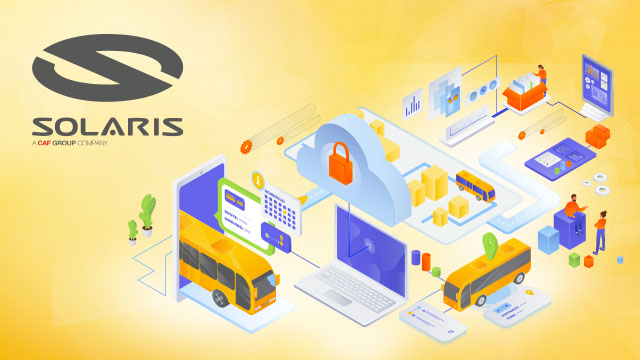Cloud Migration Strategy
The cloud migration strategy and the migration to the cloud itself is a solution for customers who expect flexibility in the use of server resources, high availability, much faster implementation and implementation of applications. The advantages of migration to cloud computing include cost reduction as well as optimization and globality of solutions.
The need to migrate resources to the cloud may also be dictated by changing requirements imposed by various standards, the need to replace equipment, expiring licenses or lease in a local server room. The cost of maintaining servers in a local server room may not be commensurate with the quality and expectations of our customers.
Migration is a process that consists of several steps:
The first step is a business and technical evaluation, which consists of an analysis of:
- risks and costs,
- range
- benefits.
The second step is to discover and analyze the portfolio, i.e. to identify the IT resources that the company has.
Identification shall include:
- IT resources,
- business
- technical.
A thorough portfolio check helps us find answers to questions such as:
- Which applications, business units, and data centers are good candidates for migration?
- How are the applications adapted to migration?
- What (unknown) risks are associated with migrating applications to the cloud?
- How should I prioritize my apps for migration?
- What other IT resources does the application depend on?
- What is the best migration strategy for the application?
- Is it better to allow temporary downtime for the application than to perform a live migration (due to its dependencies and risks)?
Depending on the scope of the migration, we can perform portfolio analysis across the entire IT environment (all data centers), that is, in one or more data centers, for one or more business units, or for a specific set of applications that will be migrated.
The third step is planning and designing during which you need to define the migration strategy, set success criteria, prepare architecture, choose tools, build migration teams, prepare a backlog (a set of tasks to be performed according to the assumed / defined priorities).
The next stage of the migration project is planning the migration to the cloud. We use the information collected in step two.
The main objectives of the migration planning phase include:
- Determine the right size for cloud resources.
- Prioritize application migration to the cloud.
- Identify migration patterns.
- Create a detailed migration plan, checklist, and schedule.
- Create migration sprint teams.
- Identify migration tools.
Step four is the very process of migration, validation and integration.
Step five is the optimization of the cloud solution this is a very important stage, unfortunately very often overlooked in the migration planning process.
Cloud migration strategy:
Re – host (Lift and shift) – is the transfer of a server or application without (significant) changes in the code or configuration. This strategy is most often used when we need to migrate a server or application as soon as possible. Also when there is no full documentation of the source code of the application. We also use this strategy when we want to move test and development environments.
Use:
- Time pressure and lack of additional funds for migration,
- Lack of full documentation of the source code of the application, lack of the source code itself,
- Test and development environments,
- Ready-made solved (COTS) or systems to be replaced.
Re-Platform (Lift-tinker-and-shift) – this strategy most often involves changing the operating system or database engine.
Use:
- No equivalent of a given solution in the cloud,
- Expiring licenses or unable to move licenses to the cloud.
Re-Purchase (replacing) – this strategy consists in replacing the local application with a new cloud version based on SaaS, a ready-made boxed solution, or options available in the [AWS] Marketplace.
Use:
- No licenses, expiring licenses,
- Reduction of costs associated with maintaining your own server room.
Refactor – this strategy is a change in the architecture, system components, database or code of the application itself
Use:
- New architectural requirements related to reliability, scalability or ensuring high HA,
- Meeting standards, e.g. PCI-DSS, or the need to use specific cloud services.
Retire (Decommissioning) – is a strategy under which the liquidation of unnecessary servers / applications is carried out.
Use:
- Purchase/merger/reorganization of companies related to the acquisition of IT infrastructure
Retain – is a strategy within which we leave servers / applications in place, in the local Data Center
Use:
- Inability to migrate the server / application, e.g. due to the operating system, architecture or dependencies with other internal systems,
- When the cost of migration is too high.
Nowadays, companies are struggling with many problems, they are associated with a lack of experience in the challenges associated with technological changes, which undoubtedly include the migration of resources to cloud solutions. In addition, there is time pressure, limited personnel and budget resources. All these factors make the choice of strategy very difficult, if at all possible to undertake, based on one's own knowledge. To meet these problems, we try to support our clients from the very beginning of the migration process to the very end and after the migration itself by providing services related to the maintenance of the new environment.
The migration strategies we offer to our clients are in line with international standards. During the migration and after its implementation, we try to optimize the proposed solution in full cooperation with the client. We provide support from cloud architects who, during many years of their work, have gained experience with AWS, Azure, GCP solutions, but also in multicloud and hybrid projects.
We try to take care not only of issues related to technology, but also to consult all steps and proposals with a Business Analyst who combines the technical and business worlds, so that all decisions are as individual as possible. Tailor-made.
Migrating to the cloud as a service is the task of Hosters. Together with us, our clients achieve the desired effects related to migration, i.e.:
- increased flexibility,
- reducing the risk of running a business,
- maintaining high efficiency of services,
- increasing data security,
- ensuring compliance with the PCI DSS security standard,
- reducing the cost of maintaining the infrastructure.
Hostersi support their customers in developing a strategy for migration to the cloud as well as subsequent migration to the cloud. We have been building our experience in this area by performing migrations since 2013.
See also what tools supporting the creation of migration strategies and migration to AWS itself we use.
Check out our migration projects:
- Migration of Institute of Geodesy and Cartography application to Amazon Web Services using AWS PoC
- Migration of a microservices-based development environment to AWS for NeuroSYS
- Migration to AWS of Tipmedia services
- Migrate to Amazon Web Services Landingi.com
- Migration to the AWS cloud of the MJM sales platform




